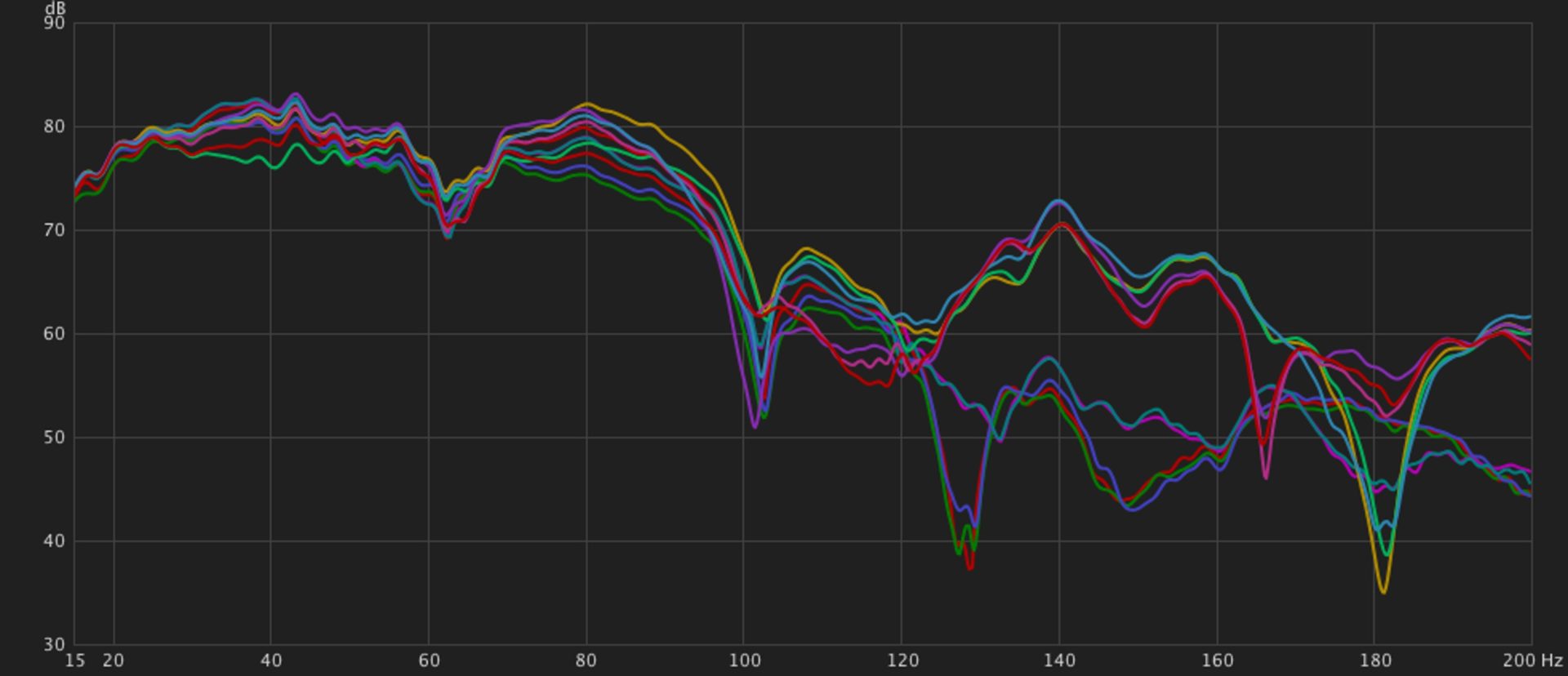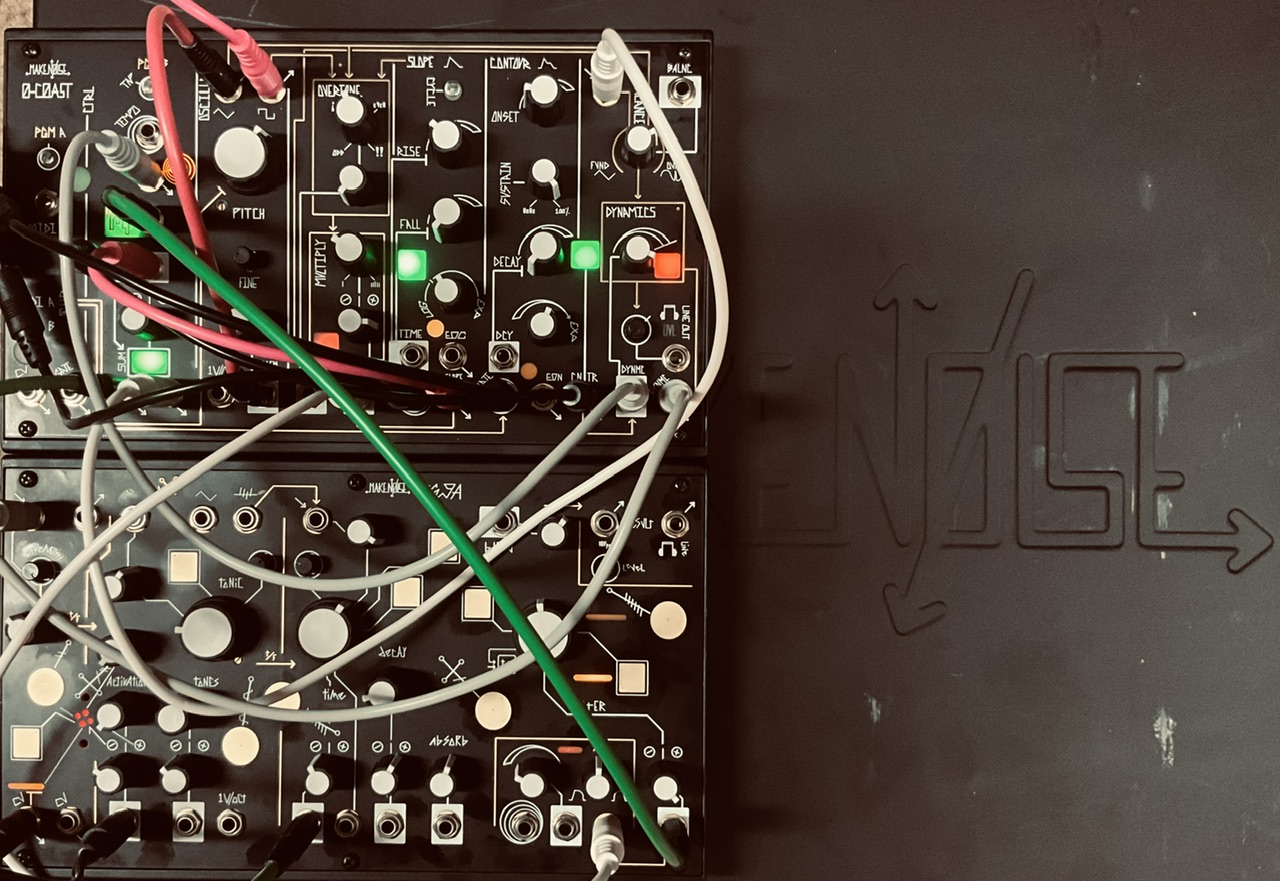One thing you hear a lot in modular synth circles is you should take things slowly when you get a new module. Tease it, tickle it, and abuse it until you can find out what makes it unique, and how you might reasonably use it in your work. It’s good advice. Even simple modules can be incredibly complex, or have particular idiosyncrasies that keep you from the results you were expecting despite being fully within the module’s capabilities. It’s good practice to take the time to learn a module.
Except I’m terrible at that. I almost immediately look to try some difficult to make patch that’s hard to set up. Something well above my technical skill level or that I have no experience with. The sort of thing that can make you sell a module quick. Last night was one of those nights. Sort of. Rather than the teasing or tickling I might have been better advised to do, I decided to try an advanced patch straight out of the box, and it taught me a lesson on ingenuity in the face of scarcity.
Having been fully immersed in Make Noise land for the last several months, including a trip to Asheville where I was able to get the lauded QMMG, I got curious about their line of standalone synths, lovingly known as the Make Noise Easel, a trio of two monosynths and a touch controller/sequencer.1 I hadn’t paid much attention to these instruments until recently. In fact, I pretty much immediately dismissed them as something I’d never really want. I have over 2000hp of modular synth, including ~300hp of Make Noise modules. Why would I want a basic monosynth, or a single oscillator synth with a noisy delay? What can those things do that the main modular can’t? What can they do that my Make Noise system can’t?
It turns out the Make Noise 0-Series can do a lot. Certainly a lot more than I initially imagined, including being a paraphonic subharmonic chord machine.2 It’s not that the Make Noise 0-Series is any more capable than a full modular synth. They’re definitely not. But they are designed as self-contained instruments to be played together as a unit, and are all capable of beautiful results individually, and mindblowingly awesome results when played together.
My curiosity piqued, I began to put the pieces together. A Strega and 0-CTRL arrived the same day, though to my dismay, the 0-CTRL arrived with a malfunction pot.3 That first night I explored the Strega, but regretfully didn’t record it. The following day I received the 0-Coast and immediately plugged them in. After initially probing the 0-Coast a bit to get a sense of how it works, I dove in. Not with some simple drone or quickly sequenced up jam, but with turning my new single oscillator semi-modular synth into a three oscillator subharmonic chord machine, while sending it into Strega to get a full four note chord.

Because both of 0-Coast’s function generators, Slope and Contour, can run at audio rates, they can function as oscillators. They can even both have their pitch modulated via their Time and Decay CV inputs respectfully. But this patch uses both function generators as subharmonic oscillators, using the main oscillator’s square wave out put as a trigger, while lengthening the attack of each function generator until its output is a subharmonic tone of the main oscillator’s pitch. Set the Rise and Fall of Slope, and the Onset, Sustain, and Decay parameters at full CCW, and patch the square wave output of the main oscillator to the Trigger and Gate inputs of Slope and Contour, and monitor from the Slope and Contour outputs. Slowly turn the Rise and Onset knobs clockwise until your hear the tone drop an octave. If you turn more it will drop another 5th. Experiment with these tones until you’re happy with the result. Because these oscillators are being triggered by the main oscillator they should (almost) always be in tune.
The trick to patching your newly made subharmonic tones to the output is via mixing. Patch the Slope output to an input of the Voltage Math, and the Contour output to the other channel. Then patch your output from the Voltage Math to the Balance input, and mix to taste. Because you’ve broken the normalization from the main oscillator’s triangle wave to the output mixer, you only have your Overtones to mix with the subharmonic oscillators. Be careful to minimize harmonics in your main oscillator to keep a clean mix. If you use too many upper harmonics in the main oscillator, they will drown out your subharmonic oscillators in the mix pretty quickly.
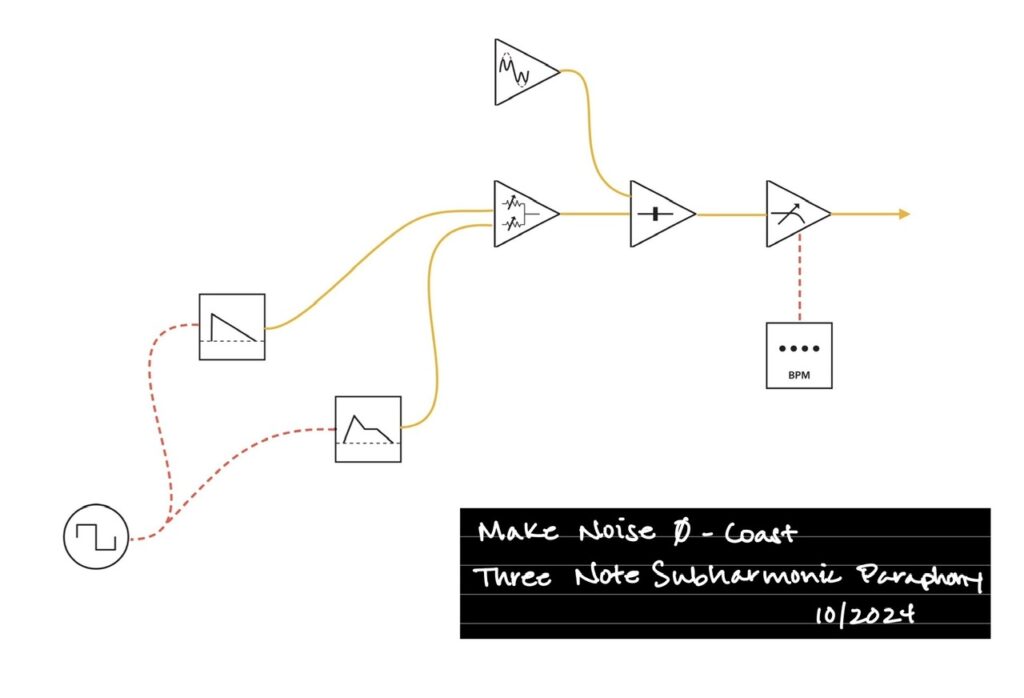
[Editorial Note: Yes, I know that Make Noise provides printable patch sheets for the 0-Series on their website, but when I tried, it was a nightmare, so I’m using my own patch documentation.]
There are downsides, however. Mixing these three oscillators is not particularly simple, and there is no mechanism for altering the timbre of the tones generated by the function generators. Fortunately Strega transforms everything that goes through its input such that it might not matter. Another downside is that you lose every source of modulation you have, except the underwhelming Strega agitator, when you make the choice to use your only two function generators as oscillators, leaving me only with the choice to use 0-Coast’s clock output to strike the Dynamic input. I could have used amplitude modulation via any of the oscillator outputs, but since this was more a technical patching exercise than a musical venture, I chose to allow the alarm-sounding tones to wail away.4
I didn’t document most of this patch in writing, although the overhead pic should reveal other parts not discussed here. For the most part the rest of the patch is window dressing for the main technical exercise of getting my new monosynth to be a parasynth, so its not all that interesting.
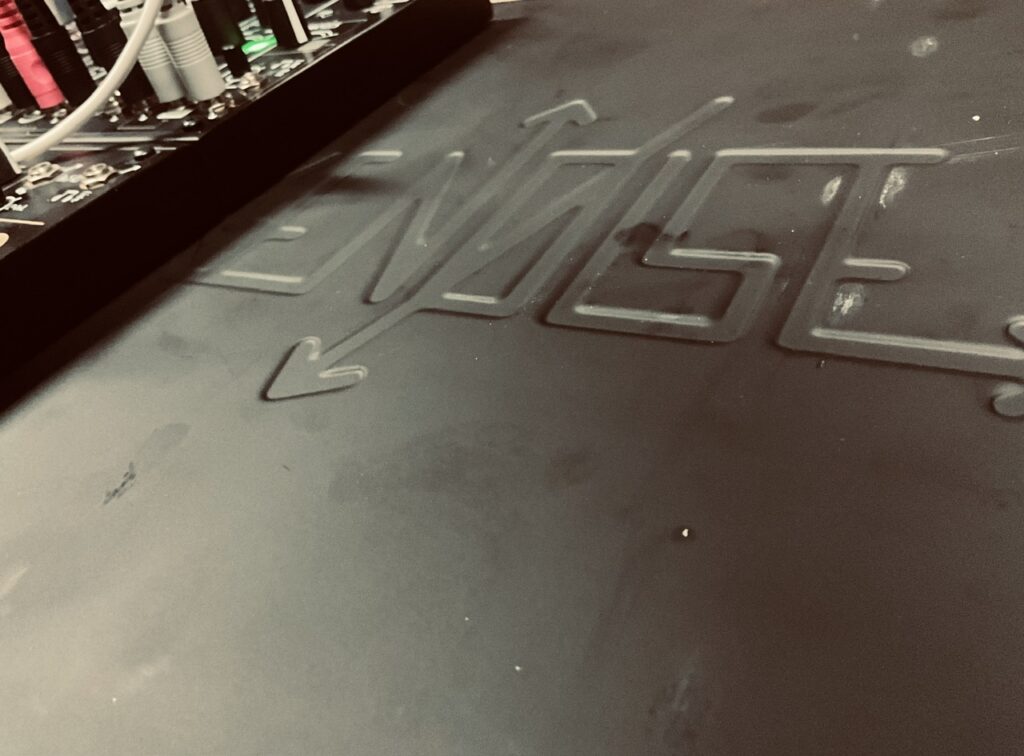
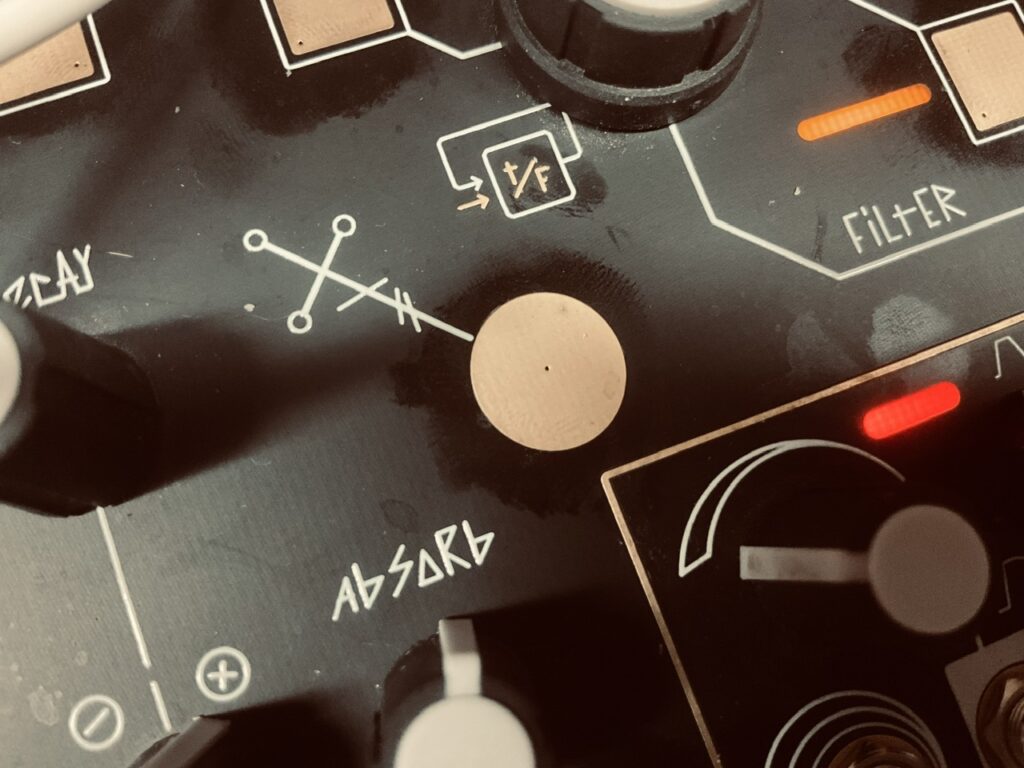
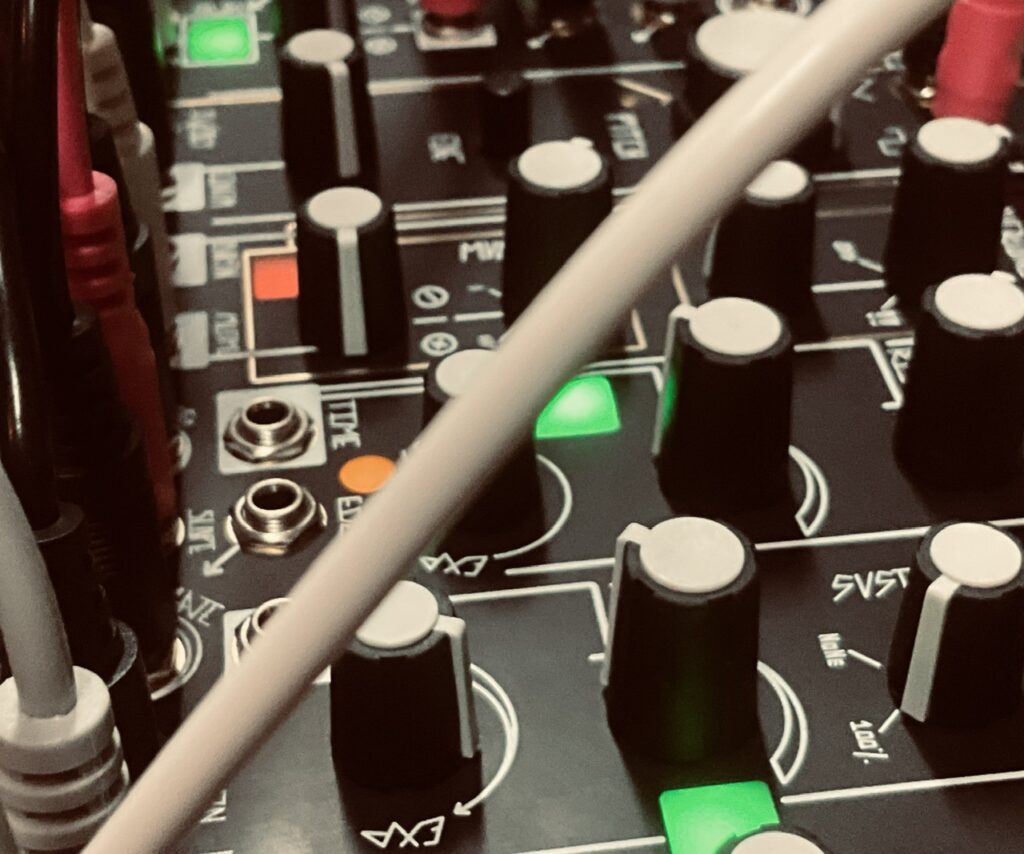
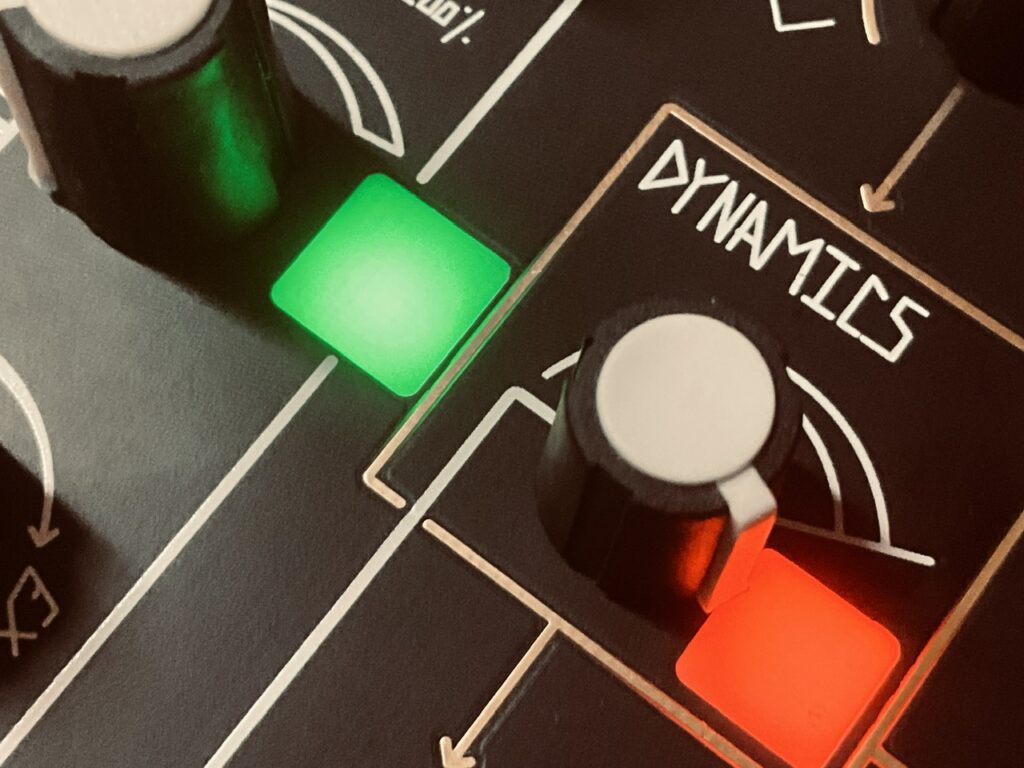
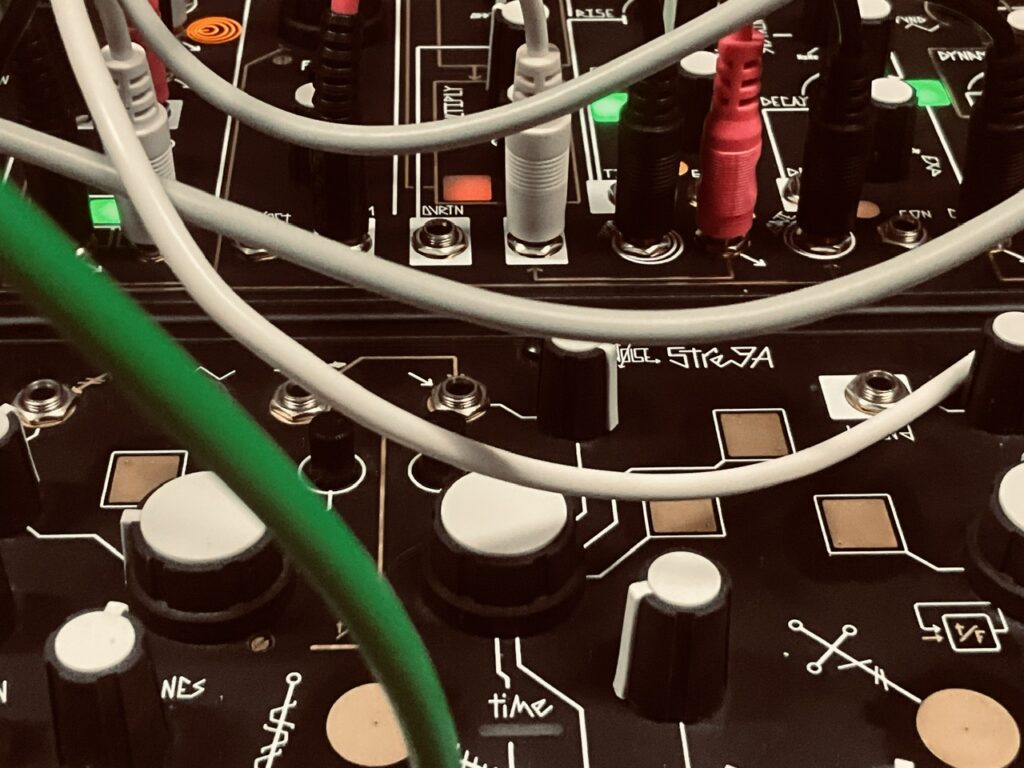
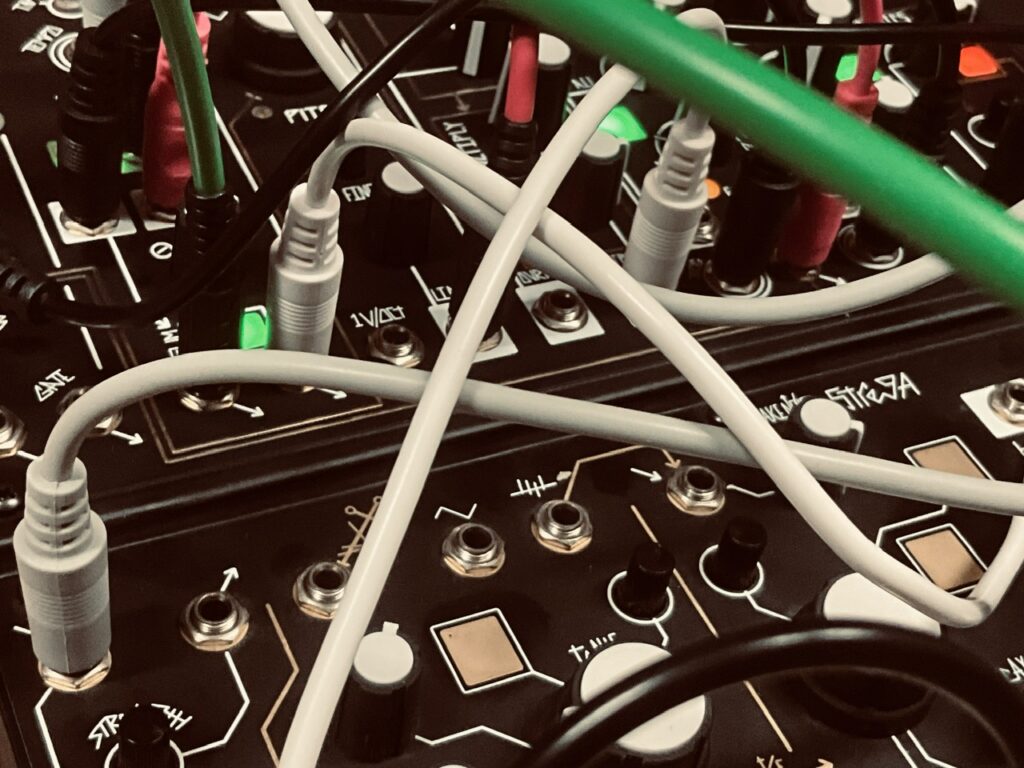
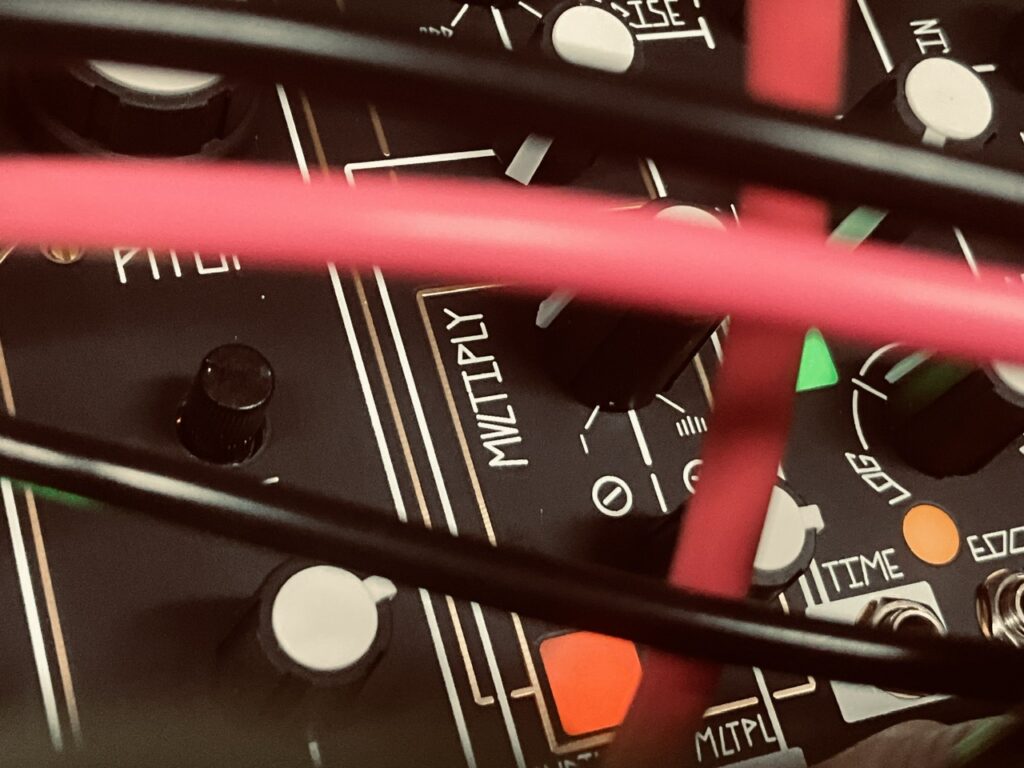
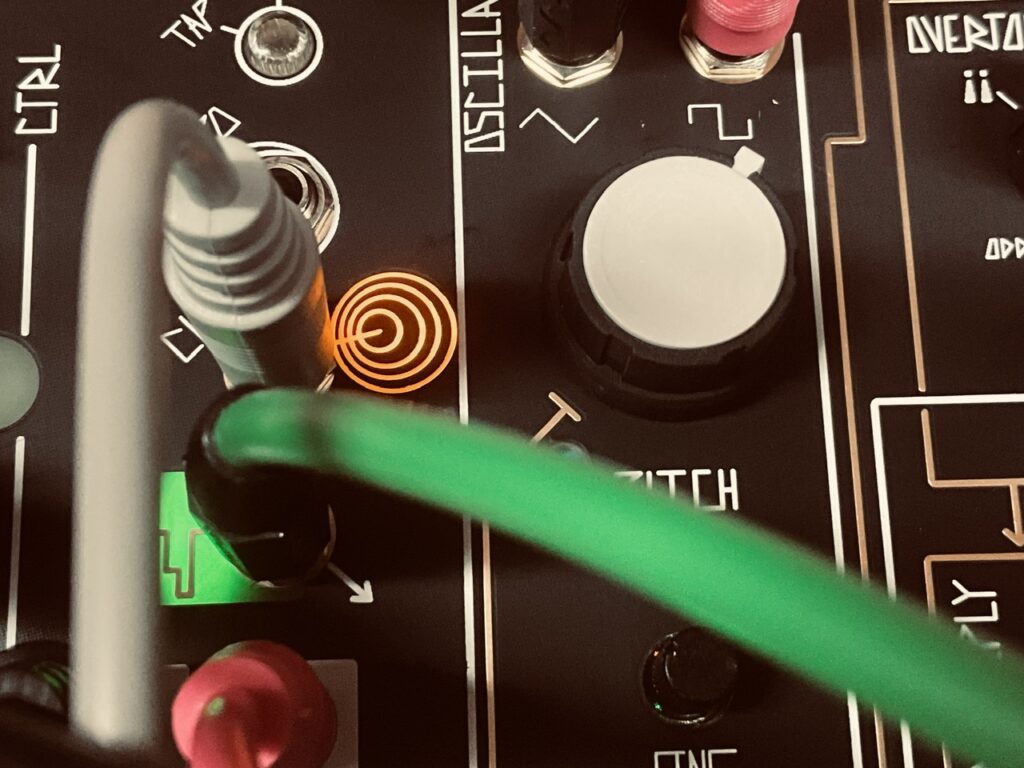
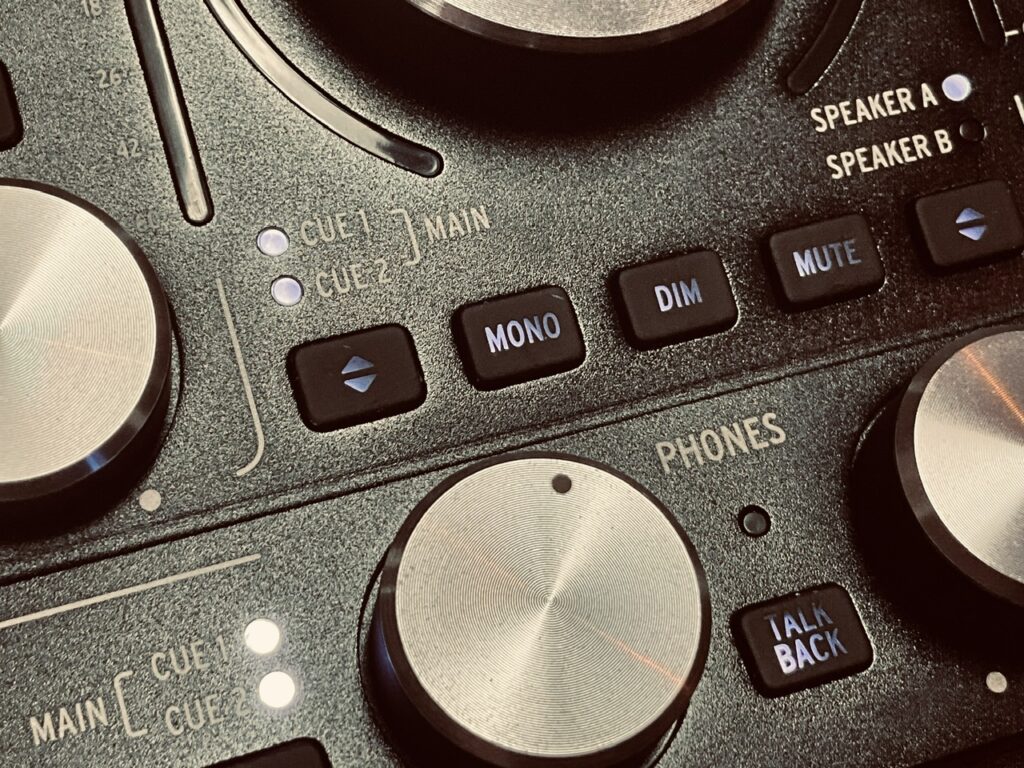
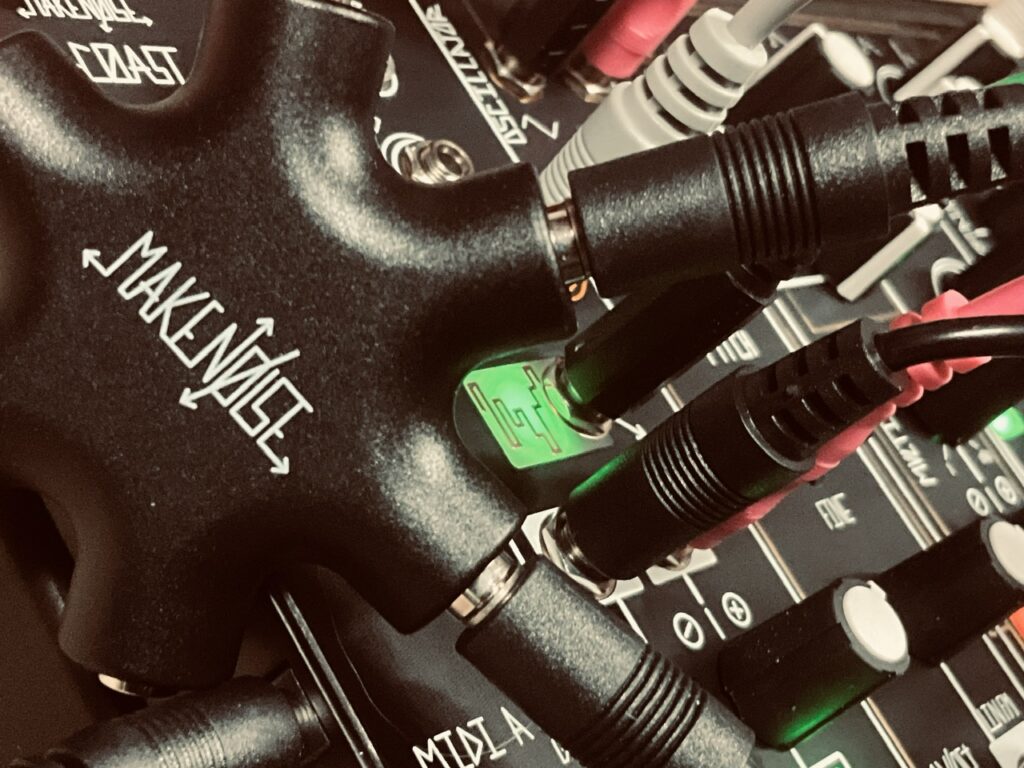
Modules Used:
Make Noise 0-Coast
Make Noise Strega
Plugins Used:
Blue Mangoo Stratosphere Cloud Reverb
Performed and recorded in 1 take in AUM on iPad via the Arturia AudioFuse.
- You can also use it as an oscillator. ↩︎
- You can also make any 3 note paraphonic chords you want if you have a non-quantized sequencer with at least three voltage outputs per step, like the 0-CTRL. I’ll document that patch in a later post. ↩︎
- The pitch pot on the 6th step would only send out voltage if I was physically pressing down on the pot. I suspect there’s a missed or cold solder connection. ↩︎
- If I were just a little smarter I might have used the 0-Coast’s Midi B output as a LFO, but I didn’t know it was possible or how to do it until afterwards. ↩︎
